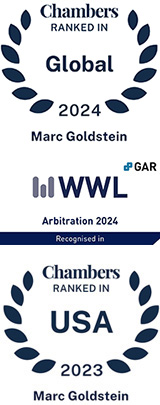Yesterday a federal judge in New York granted an anti-suit injunction, in aid of arbitration, barring Indian corporate entities from continuing litigation in India over arbitrable disputes with a U.S. company — litigation in which the Indian parties have already obtained ex parte orders enjoining the U.S. party from continuing with pending ICDR arbitration in New York. (Amaprop Ltd. v. Indiabulls Financial Servs. Ltd., 2010 U.S. Dist. LEXIS 27117 (S.D.N.Y. Mar. 23, 2010)).
The arbitration community should be encouraged by the swift and decisive support for international arbitration from the U.S. District Court in Manhattan. But the Court’s anti-suit injunction, combined with the Indian court’s ex parte anti-arbitration injunction, creates an difficult procedural standoff: the U.S. party risks contempt in the Indian court if the arbitration proceeds, while the Indian parties risk contempt in the U.S. court if the India litigation continues.
The New York federal judge, only beginning his analysis from the premise that the India anti-arbitration injunction violates the U.S. federal policy in favor of arbitration that applies with particular for in international cases, proceeded to discuss a variety of case-specific factors that indicated the vexatiousness of the India litigation and the extreme burdens it threatened for the U.S. party:
— that the Indian parties had initially appeared in the ICDR case, indicated their intention to participate and appoint an arbitrator, and obtained an extension of time to answer, while concealing their intention to obtain injunctive relief in India;
— that the Indian parties deliberately omitted critical words, in quoting the arbitration clause to the U.S. court, to create the misleading impression that the type of injunctive relief they had sought in India was permitted under the clause;
— that the proceedings in India were conducted entirely ex parte; even after obtaining that relief the underlying papers were not provided to the U.S. party, and no explanation for proceeding ex parte was provided to the U.S. court;
— that according to competent expert witness testimony of a retired India High Court judge, the average civil case in India’s courts takes at least 15 years to reach initial resolution, with appeals consuming 5 to 10 more years;
— that the pendency of parallel proceedings on the same disputes creates burdensome redundant costs, risks of inconsistent judgments, and potential for tactics to manipulate the timing of outcomes in each forum.



